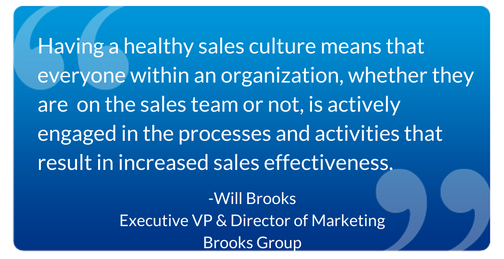Sales training can be an empty exercise if it’s not customized to your sales force and designed in the context of your company culture. This is especially true in the pharmaceutical industry, where branding is as important as in other industries, but where the sales process is also highly informed by regulations and large amounts of technical scientific data.
Sales culture in pharmaceuticals is, not unexpectedly, different from sales culture in more mainstream, less technical industries. But taking a “canned” training program and adding information about how to communicate clinical results or other technical data isn’t sufficient for training the pharmaceutical sales force. Every pharma company has its own internal “society” that crosses departmental boundaries. Understanding that internal society, how it was formed, and what keeps it going, is indispensable to designing a sales training program that isn’t tone deaf and that produces a strong return on investment.
Ask Questions to Determine Relevant Sales Training
So, how do you begin in putting together the optimal training program for your sales team? One way to start any critical undertaking is by asking key questions and getting honest answers to them. For example:
- What do sales team members have to accomplish to fulfill their sales roles?
- Where are they successful already and how do I know that?
- Where are the opportunities for improvement?
- Which area that needs improvement is a logical starting place?
This is the type of due diligence any individual or organization would undertake when starting something new, whether that’s a new investment, a self-improvement program, or a sales training program.
Other considerations before determining the best approach for your team include what technology is most appropriate to the task, what you want the training to accomplish in measurable terms, and what the business case is for proposed training programs.
Customized Sales Training Must Be Based on Company Culture
The sales training program that works wonders for those who sell heavy agricultural equipment is, of course, different from the program that will work for those who sell cosmetics or pet accessories. But even within industries, company culture is a differentiator that influences branding and how the company is perceived both within and by outsiders.
Not all companies pay attention to the concept of company culture and are content for “culture” to arise organically as the company grows. This, however, is short-sighted. Like a shrub allowed to grow in whatever direction it wants, the results can be invasive and inconvenient. But in organizations that take a visionary approach, know what they want their company culture to be like, and map out a plan to get there, culture can indeed be an amazing differentiator, and brings countless other benefits, like making it easier to attract and retain top talent.
Organizational culture must be taken into account in the design of sales training programs, or any return on investment will be accidental. The training program that resonates with your people and your culture, however, will make more sense, be received more readily, and produce results that are in keeping with both sales goals and brand goals.
Identifying Sales Roles Is Essential Beforehand Too
You’ve asked the questions, reviewed the company culture and determined which technology is most appropriate to your needs. How then, do you narrow down the options so you can make an informed choice with which you can be confident? One way is to determine whether the current sales team is getting the bulk of its revenues from existing clients or new ones. Do sales leaders believe they have as much business as they need, or whether competitors are beating them out?
What mix of existing and potential accounts do your territory representatives have? Is that mix appropriate? Like getting the oxidizer to fuel ratio correct in an internal combustion engine, getting the existing-to-potential accounts ratio right for your organization makes it run more efficiently and smoothly. Where should growth come from? Should it come from new customer acquisition, or through retaining and strengthening current accounts?
Select Sales Training Based on Insights
Suppose you work with a key account manager and determine that the key to growth is better penetration in existing accounts. That lets you know that the training strategy should focus on account strategy rather than acquiring new customers. Can other business units within existing customer organizations be incorporated into your sales strategy? Could non-traditional decision makers help increase penetration with a customer organization?
On the other hand, if pursuing new account acquisition is what your insights and data indicate you should do, how can training focus on effective segmentation and prioritization? How can sales professionals allocate their efforts toward accounts with higher potential long term? Could time management training benefit trainees so that maintaining current accounts isn’t left by the wayside?
Sales Culture Is Company-Wide
Sure, you have a defined pharmaceutical sales team, but sales culture in many ways transcends departmental boundaries. In some organizations, training is provided to departments other than sales so they can understand the sales process and their role in it. Learning what makes a customer want to buy a product is not only valuable information to the sales team, but also to marketing, customer service, and possibly even research and development.
A sales training initiative that involves other departments can be valuable in getting everyone to understand the same language and use the same “playbook” as they go about their tasks. This can be a powerful way to unify attitudes between Sales and Marketing, reducing miscommunication and facilitating faster solutions when problems arise. What’s more, the corporate silo can be an enormous impediment to effective organization-wide communication, and providing cross-company training can help break down silos that have been built and prevent new ones from rising up around a department or group. An attitude of collaboration amongst departments helps everyone align goals and processes to reach them, even if the actual tasks vary considerably between departments.






